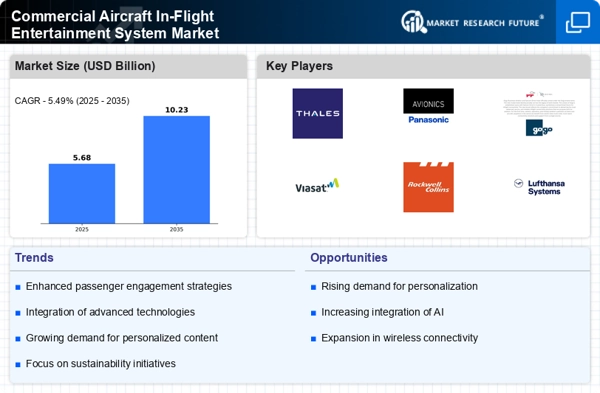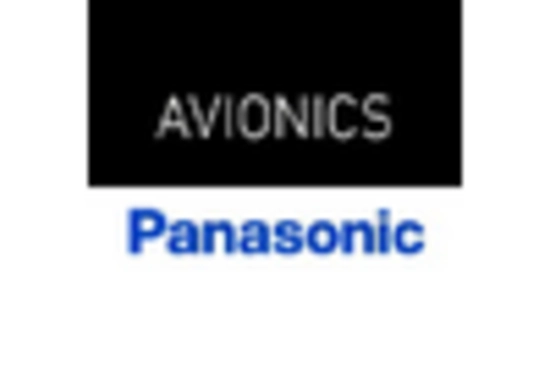The Commercial Aircraft In-Flight Entertainment System Market is currently characterized by a dynamic competitive landscape, driven by technological advancements and evolving consumer expectations. Key players such as Thales (FR), Panasonic Avionics (US), and Viasat (US) are at the forefront, each adopting distinct strategies to enhance their market positioning. Thales (FR) emphasizes innovation through the integration of immersive technologies, while Panasonic Avionics (US) focuses on expanding its global footprint by forming strategic partnerships with airlines. Viasat (US) is leveraging its satellite technology to provide high-speed internet connectivity, which is increasingly becoming a critical component of in-flight entertainment systems. Collectively, these strategies contribute to a competitive environment that is increasingly focused on enhancing passenger experience and operational efficiency.
In terms of business tactics, companies are increasingly localizing manufacturing and optimizing supply chains to respond to regional demands and reduce costs. The market appears moderately fragmented, with several players vying for market share, yet the influence of major companies remains substantial. This competitive structure allows for a diverse range of offerings, catering to various airline needs and passenger preferences, while also fostering innovation through competition.
In August 2025, Thales (FR) announced a partnership with a leading airline to pilot its next-generation in-flight entertainment system, which incorporates augmented reality features. This strategic move is significant as it positions Thales at the cutting edge of technology, potentially enhancing passenger engagement and satisfaction. The collaboration may also serve as a benchmark for future developments in the industry, indicating a shift towards more interactive and personalized in-flight experiences.
In September 2025, Panasonic Avionics (US) unveiled a new suite of services aimed at improving the passenger experience through enhanced connectivity options. This initiative is crucial as it aligns with the growing demand for seamless digital experiences during flights. By focusing on connectivity, Panasonic Avionics is likely to strengthen its competitive edge, appealing to airlines that prioritize customer satisfaction and operational efficiency.
In July 2025, Viasat (US) expanded its satellite network capabilities, which is expected to significantly enhance its in-flight internet services. This expansion is pivotal, as it not only improves service reliability but also positions Viasat as a leader in high-speed connectivity solutions. The ability to offer superior internet services could attract more airline partnerships, thereby solidifying its market presence.
As of October 2025, the competitive trends in the Commercial Aircraft In-Flight Entertainment System Market are increasingly defined by digitalization, sustainability, and the integration of artificial intelligence. Strategic alliances are becoming more prevalent, as companies recognize the value of collaboration in driving innovation and enhancing service offerings. Looking ahead, competitive differentiation is likely to evolve from traditional price-based competition to a focus on technological innovation, enhanced passenger experiences, and supply chain reliability. This shift underscores the importance of adaptability and forward-thinking strategies in maintaining a competitive edge in a rapidly changing market.


















Leave a Comment